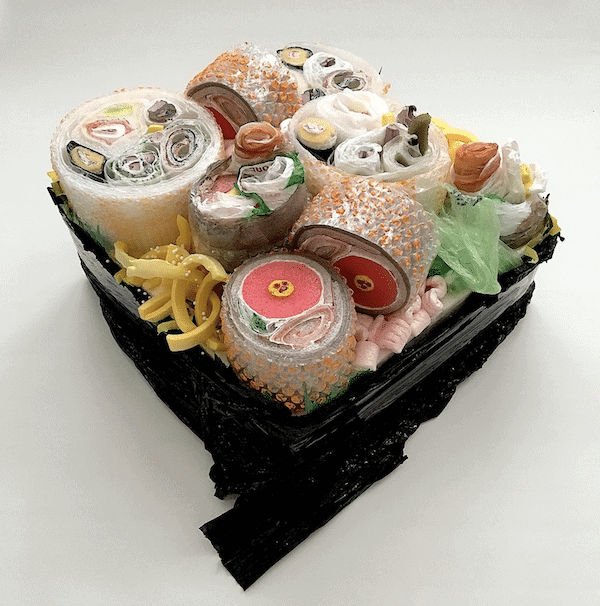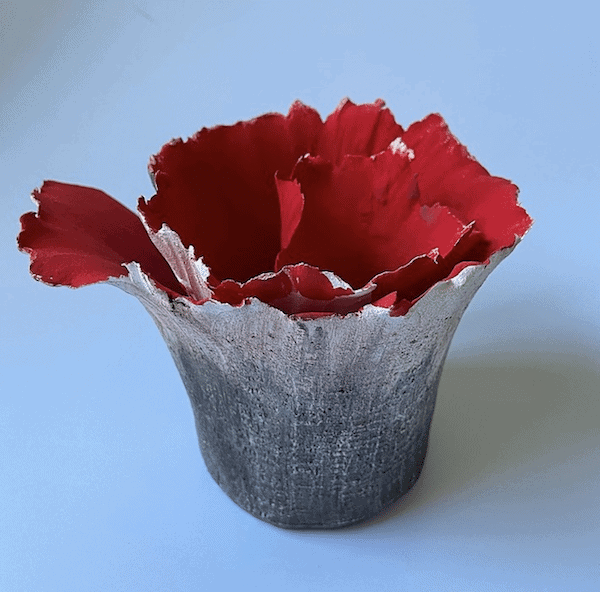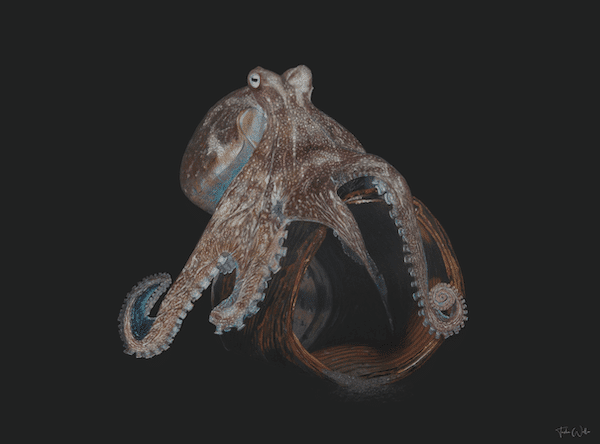Our planet faces increasing environmental challenges, and the artistic community is responding by embracing sustainable art and eco-friendly materials. This exciting movement marries artistic creativity with ecological responsibility, paving the way for a more sustainable future in art. In this comprehensive guide, we’ll delve into the captivating realm of environmentally conscious art, explore a wide range of innovative sustainable materials, and learn how you can adopt greener practices in your artwork.
Back to the Roots: A Brief History of Sustainable Art
Sustainable art is not a recent phenomenon. Eco-artists have incorporated environmental themes and concerns into their work for decades. Artists from the Land Art Movement, like Robert Smithson, Nancy Holt, and Michael Heizer, created large-scale works directly in the natural landscape, often using organic materials such as earth, rocks, and wood in their installations. These artists aimed to draw attention to the relationship between humans and the environment, provoking thought about our impact on the planet.
The Earthworks movement, closely related to Land Art, also gained prominence during the same period. Earthworks artists like Agnes Denes and Alan Sonfist focused on environmental restoration, creating art pieces to repair or rehabilitate damaged ecosystems.
Today, the concept of sustainable art has evolved to encompass more than just the artwork but a wider range of environmental issues, such as the materials artists use to create their works, reducing waste, and adopting practices that can reduce the impact of their work on the environment. This shift in focus has led to numerous artists joining the movement toward sustainability in the art world.
What are Sustainable Materials in Art?
Longstanding traditional art practices and materials can be toxic and harmful to the planet. Artists and craftspeople who want to reduce their environmental impact often begin their journey using art materials with a lower ecological footprint. Luckily, as in many other industries, access to eco-friendly art supplies is on the rise. So if you’re a creative who also wants to remain conscious and minimize impact, here are some materials you may want to consider in your creative pursuits.

Bryan Northup extracts meaning from plastic “waste” that most of us don’t give a second thought about. “You Eat It” (2017)
- Reclaimed Wood has become a versatile and often-used material in art. Sourced from old buildings, shipping pallets, or fallen trees, reclaimed wood allows artists to create unique and visually striking pieces while reducing deforestation and waste. Reclaimed wood can be used for sculptures, installations, or as a canvas for painting, providing a rustic and natural aesthetic that adds depth and character to the artwork.
- Eco-Friendly Paints are also becoming more popular, employing natural pigments and binders that contain fewer harmful chemicals and volatile organic compounds (VOCs) than traditional options. Brands like Earth Paints, Natural Earth Paint, and Bioshield offer a range of eco-friendly paint and other options for artists looking to make the switch.
- Recycled Metal is another sustainable material gaining traction in the art world. Artists like El Anatsui and Vik Muniz have gained international recognition for their use of discarded metal objects and industrial scraps, such as aluminum, copper, steel, and brass, to create unique sculptures and installations while reducing waste and conserving resources.
- While plastics have been incredibly useful in many industries due to their durability, versatility, and low cost, they also pose significant environmental problems. Most plastics are not biodegradable persisting for hundreds or even thousands of years, which leads to the accumulation of plastic waste in landfills, oceans, and other ecosystems. Biodegradable and plant-based plastic alternatives are eco-friendly alternatives derived from renewable resources like corn, sugarcane, and algae. They can break down faster and with less environmental harm than traditional plastics.
- Organic textiles, like cotton, hemp, and linen, can also be incorporated into the artwork. These materials are grown without synthetic pesticides and fertilizers. Artists can use organic textiles for tapestries, wall hangings, or mixed media pieces, blending sustainability with creative expression.
- Natural and Found Objects can create unique and thought-provoking pieces that engage with the natural world by incorporating items such as leaves, branches, rocks, or discarded materials found in the environment. This approach reduces the consumption of new materials and sparks conversation about the relationship between humans, the environment, and art.
Green Practices: Making an Eco-Friendly Art Studio

Rita Gruning-Fankhauser uses a variety of sustainable media to express ideas about the world. “Bloom After the Fires” (2020)
In addition to using sustainable materials, adopting greener practices in your art studio can significantly reduce your environmental footprint. Here are some tips to help you transform your workspace into an eco-friendly haven.
- Mindful Material Management. Be conscious of the materials you use in your artwork and strive to reduce waste in your studio. Look for ways to repurpose scraps or leftover supplies, and consider upcycling found objects to give them new life in your art. Set up recycling stations for paper, plastic, and metal waste, and dispose of materials responsibly.
- Energy-Efficient Illumination. Upgrade your studio lighting to energy-efficient options like LED or CFL bulbs to reduce energy consumption. These bulbs last longer and consume less energy than traditional incandescent bulbs, making them a more sustainable choice for your workspace. Additionally, consider making use of natural daylight when possible, which not only saves energy but also provides an ideal light source for many artistic endeavors.
- Green Cleaning. Opt for eco-friendly cleaning products for your brushes, palettes, and work surfaces. These products typically contain natural, biodegradable ingredients and are free from harmful chemicals. Brands like Green Works, Ecover, and Seventh Generation offer artists a range of eco-friendly cleaning options.
- Energy-Efficient Heating and Cooling. Consider installing a programmable thermostat, like Nest, which can help regulate the temperature more efficiently and save energy in the long run. Proper insulation and weatherstripping can help maintain a comfortable temperature in your studio while reducing energy waste.
- Conscious Shipping. When transporting your artwork, use sustainable packaging materials, such as recycled cardboard, biodegradable packing peanuts, or reusable crates like Rokbox. You can also find shipping and storage companies that utilize environmentally friendly shipping methods and equipment, such as low-carbon emission trucks.
Community and Collaboration: Building a Sustainable Art Movement

Tasha Waller, “Southern Keeled Octopus” (2021). The Southern Keeled octopus is common in shallow coastal waters of south-eastern Australia. They often are found using discarded rubbish like tins and bottles as homes.
While changing practices to become a more eco-friendly artist helps reduce the toxic impact on our planet’s ecosystem, the environmental benefits from an individual artist just won’t be enough. An essential aspect of the sustainable art movement is the power of community and collaboration. By working together and sharing knowledge, environmentally conscious artists can inspire each other and motivate more artists to join the movement toward making a greener art world. Here are some ways you can contribute to the movement and foster a sense of community among like-minded artists:
- Use social media and blogging. Share your experiences, insights, and tips on eco-friendly art and sustainable practices to show other artists how easy it is to be green. By documenting your journey and engaging with your audience, you can inspire others to adopt greener practices. Also, letting potential buyers know you are a sustainable artist can tip the scales in your favor over non-environmentally conscious artists they are considering for their next art purchase or creative project.
- Networking and Mentorship. Join local or online groups, attend workshops, and participate in events that focus on sustainable art practices. Networking with fellow eco-artists can help you learn from their experiences, gain new ideas, and foster collaboration on future projects.
- Exhibitions and Festivals. Participate in shows and festivals that celebrate eco-friendly art and sustainable practices. By showcasing your work in these settings, you can raise awareness about environmental issues and demonstrate the potential of sustainable materials and techniques in the art world.
- Education and Outreach. Lead workshops, give lectures, or collaborate with local schools and organizations to teach others about your experiences developing a sustainable art practice. By sharing your knowledge, you can inspire the next generation of artists to adopt a more environmentally conscious approach to their work.
The Global Impact: Celebrating Eco-Friendly Artists from Around the World
Eco-friendly art is a global movement, with artists from all corners embracing sustainable materials and practices. Becoming sustainable might seem daunting and costly, but the movement’s success has made the sustainability journey easier and less costly than it had been, even in the recent past. Sustainability has become a successful art niche, with many artists gaining fame due to their environmentally friendly practices. Here are a few examples of international eco-artists who have gained notoriety.
- Aurora Robson (Canada/United States): Known for her intricate sculptures and installations made from discarded plastic materials, Aurora Robson’s work raises awareness about plastic pollution and the need for sustainable alternatives.
- Nils-Udo (Germany): A pioneer of the Land Art movement, Nils-Udo creates site-specific installations using natural materials such as leaves, branches, and stones. His work emphasizes the interconnectedness of humans and the natural world and reminds us of our responsibility to protect the environment.
- Luzinterruptus (Spain): This anonymous art collective creates temporary installations in public spaces using recycled materials and LED lights. Their work often addresses environmental and social issues, such as plastic pollution, water scarcity, and energy consumption.
- Tonny Ndungu (Kenya): Ndungu is a self-taught artist who uses discarded materials, such as aluminum cans, plastic bottles, and computer parts, to create unique sculptures and installations. His work highlights the potential for upcycling and repurposing waste materials while also raising awareness about the importance of waste management and recycling.
Painting a Greener Future Together.
The success of the sustainable art movement is a testament to the creativity, dedication, and innovation of artists committed to making a difference. By adopting these practices and using sustainable materials, artists can captivate their audience while contributing to a healthier planet. With each eco-art piece we create, every environmentally friendly practice we adopt, and every person we influence through our eco practices, we are taking steps toward building an art world that values beauty and responsibility . So, let’s pick up our brushes, roll up our sleeves, and paint a greener future together!
________________
What sustainable materials and practices have been successful for you as an artist? Let us know in the comments below.